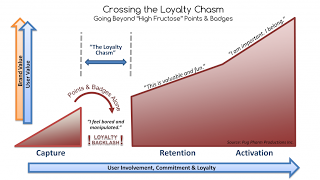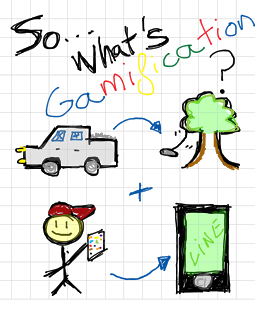Different people, different motivations
In the first part of this post, we established why it was important to identify the expected roles of our target players, as well as introduced the axioms underlying this model. If you want to know more about it, or missed out the introduction part, i truly recommend you to have a look back here: /2013/04/gamification-player-types-t-e-piramid-i.html?showComment=1367064859271
Before starting with the characteristics and definitions of each player, i do want to focus on something that i consider, it is really important to take into account:
"Players are not always the same. Their roles and motivations change throughout the player´s journey, and our best hope is to make it endless in time"
I really want to highlight that, as experts like Andrzej Marczewski or Richard Bartle have stated, our players will change while playing, and this types also vary from game to game. That is why, when designing a gamified system, we must take into account that onboarding players will change towards the middle part of our game, looking for a richer experience. Every gamified system will have different players, and those players will also be different in their behaviours in other games.
Let´s put an example of this:
This is a screenshot of the book "Game On" of Jon Radoff, and it is very interesting because, even when it shows the "common" pacing of a game, it let us see how a game changes in time. And so does the player.
So, a certain kind of person (remember we have/need some data about our target players) starts playing our gamified system, and we have identified that, this player is likely to be a netwoker. Someone that is playing the gamified system just to expand his contacts.
However, during the "game", he meets some nice people making a group with them, with no other purpose rather than hanging out and having some fun. At the same time, he starts influencing some new players that just discovered the platform, realising all of a sudden, that he is part of something bigger than himself, a community that just arose, what keeps him engaged, turning his pure extrinsic motivation into a more intrinsic one.
What if i tell you this example is something that usually happens in Twitter?
Players change and we have to be aware of that fact to adapt our design process to it. Also, what is valid for one game is not for another. The same people, act different in different games.
I really want to highlight that, as experts like Andrzej Marczewski or Richard Bartle have stated, our players will change while playing, and this types also vary from game to game. That is why, when designing a gamified system, we must take into account that onboarding players will change towards the middle part of our game, looking for a richer experience. Every gamified system will have different players, and those players will also be different in their behaviours in other games.
Let´s put an example of this:
This is a screenshot of the book "Game On" of Jon Radoff, and it is very interesting because, even when it shows the "common" pacing of a game, it let us see how a game changes in time. And so does the player.
So, a certain kind of person (remember we have/need some data about our target players) starts playing our gamified system, and we have identified that, this player is likely to be a netwoker. Someone that is playing the gamified system just to expand his contacts.
However, during the "game", he meets some nice people making a group with them, with no other purpose rather than hanging out and having some fun. At the same time, he starts influencing some new players that just discovered the platform, realising all of a sudden, that he is part of something bigger than himself, a community that just arose, what keeps him engaged, turning his pure extrinsic motivation into a more intrinsic one.
What if i tell you this example is something that usually happens in Twitter?
Players change and we have to be aware of that fact to adapt our design process to it. Also, what is valid for one game is not for another. The same people, act different in different games.
3 Types of Fun
So, after the former explanation, let´s get into each type of fun, what kind of motivation is behind and which different players we can find within each one in a brief way.
The Time - Engagement pyramid is based on 3 types of fun, according to the different kinds of motivations that players have in each level (all the basics about this extended model of Andrzej Marzcewski´s players can be found here, in the first part of this post: /2013/04/gamification-player-types-t-e-piramid-i.html?showComment=1367064859271)
In this second part of the post, we will go through the 3 types of Fun with examples, keeping the "Meet the players" stuff, for the third and last part of this model.
Fun 1.0: Enjoyers
Fun 1.0 is based on the first PERMA factor, pleasure, or also called positive emotion. Things like joy, gratitude, interest, surprise, curiosity, hope, pride, courage, inspiration or awe. (some taken from http://thehappinesscoach.biz/more-than-just-happiness-five-pillars-of-well-being-perma).If we think about it, they are all pretty "instant" at some point, but very powerful at the same time. This is what i call "Quick Fun" because in a gamified system, these are the kind of things we experiment first, when we discover it. Of course, we will keep on experimenting many of them, but will be mixed with other motivations.
In example, we can experiment Fun 1.0 the first time we enter Foursquare, all those badges are so epic! And what is that "major" thing? Oh! Someone just checked in a place i used to go! Wow!
Or when we just signed up for Line, and a friend sends us one of those super cool stickers! I am the second one of my friends doing this and i feel so lost but it´s fun! We dont even know where to start but hey!, curiosity is killing us, so let´s find out!
According to this motivation, the kind of player that we can identify here is the ENJOYER.
Fun 2.0: Networkers, Self seekers & Farmers
Fun 2.0 is based on extrinsic factors, so basically, all kinds of rewards that our gamified system is going to give the players.
As we have established before, in order to understand the motivations between rewards, we will take relatedness, meaning and achievement (the factor of intrinsic motivation) in a pure extrinsic way. Any kind of reward that are players will get count as extrinsic motivation, no matter the way this reward is.
So in example, what happens when our players are looking for relatedness in a pure extrinsic way? When any of us joins a gamified system just as we have said before, to make some business contacts, which are the rewards the play.
Then we meet the NETWORKER
A very clear example of this is LinkedIn (don´t get me wrong, it has many other intrinsic motivations too) in the beginning, when we just join it for career reasons.
If extrinsic motivation is to be applied to meaning and achievement, we find the SELF SEEKER and the FARMER.
We´ll "meet" all these players in detail in our next post, but as an introduction, think about Twitter/Reddit for the Self Seekers and how this kind of people act for their own benefit, and about the facts that could make a farmer on Candy Crush or Farmville.
The last type of motivation and by far, the most powerful is the intrinsic one. Researchers have studied the intrinsic human motivators for decades, coming to the conclusion that mastery, autonomy, relatedness and purpose are its main factors.As we have established before, in order to understand the motivations between rewards, we will take relatedness, meaning and achievement (the factor of intrinsic motivation) in a pure extrinsic way. Any kind of reward that are players will get count as extrinsic motivation, no matter the way this reward is.
So in example, what happens when our players are looking for relatedness in a pure extrinsic way? When any of us joins a gamified system just as we have said before, to make some business contacts, which are the rewards the play.
Then we meet the NETWORKER
A very clear example of this is LinkedIn (don´t get me wrong, it has many other intrinsic motivations too) in the beginning, when we just join it for career reasons.
If extrinsic motivation is to be applied to meaning and achievement, we find the SELF SEEKER and the FARMER.
We´ll "meet" all these players in detail in our next post, but as an introduction, think about Twitter/Reddit for the Self Seekers and how this kind of people act for their own benefit, and about the facts that could make a farmer on Candy Crush or Farmville.
Fun 3.0: Socialisers, Goal seekers & Achievers
After asking Dr. Martin Selgiman (Author of the book "flourish" and expert in positive psychology) via email, i have decided to set autonomy as a whole, something that must be in every system, to focus on the types of player that arise when they base their motivations on the social aspect of our gamified system, on some kind of goal or purpose or when they simple want to get achievements to progress.
So let´s go with the Nike+ example, one of the masterpieces of gamification.
When we start playing Nike+, our main goal is to train and improve, to be able to run some distance we never could. In the end, is all about achieving goals that we never thought we would reach.
However, not only we set goals, we also feel some kind of purpose in it, running to be part of something bigger than ourselves, the running community, sharing the results with our people.
Even stronger is the feeling of meaning in the game "Free Rice" that helps millions of people worldwide donating rice while we play (check it out and play here: http://freerice.com/#/english-vocabulary/6969)
To sum up in a brief way, when this motivators are enhanced in a gamified system, our engagement skyrockets in the long term, and we encounter the SOCIALISERS, GOAL SEEKERS and the ACHIEVERS that we´ll meet in our next post
...If you want to know more about gamification player types and "meet" every type of them check out our next post!!!...
Sidney Lopez


















